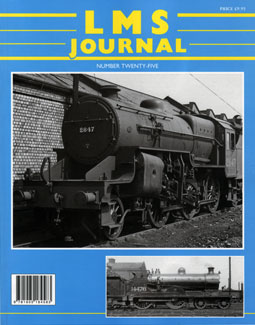LMS JOURNAL
Issues
LMSJ Issue 25
ISBN 978 1 905184 58 3
Contents
|

|
EDITORIAL
There is a strong Scottish element in this issue that reminds me of the Railway Magazine, which for many years always featured a Scottish article in the January issue. I am pleased to include Peter Tatlow's article about Pullman Cars in Scotland and the LMS policy towards them. I was also delighted with the response from Scottish readers to my query about the indicators carried by some locomotives when running over some lines in the Northern Division. I would like to thank readers who contacted me with information about this practice and the first to offer an article was Stuart Rankin, which should appear in the next issue.
If I can continue the Scottish theme, I would be interested to publish an article describing the LMS policy towards having to accommodate dual braking systems on locomotives and stock, as the Westinghouse stock would have caused operating problems when the three Scottish companies became part of the LMS. Whilst the story of the LT£SR, the other line to use the Westinghouse brake, was far less complicated, this railway, which became part of the Midland in 1912, was to a large extent a self-contained section. This was not the case in Scotland, so if any reader feels he can tell this story, please do not hesitate to contact me. So far, my enquiries have not been fruitful.
The files at the National Archive continue to produce useful material and in this issue I have reproduced some about the LMS company policy towards the use of steel in rolling stock. It is one thing to be aware of what the company did, but it is more interesting to know why it was done. During the next few issues we have more from the same source.
Continuing my 'begging' theme, readers will note the heading picture was taken on the LMS Central Division. Discerning readers will have noted that this is the least well covered of the four LMS operating divisions, but we do have some articles about the Central Division that will appear later this year.
Bob Essery
Site contents Copyright © Cygnet Magazines Limited, 2014-2025.




